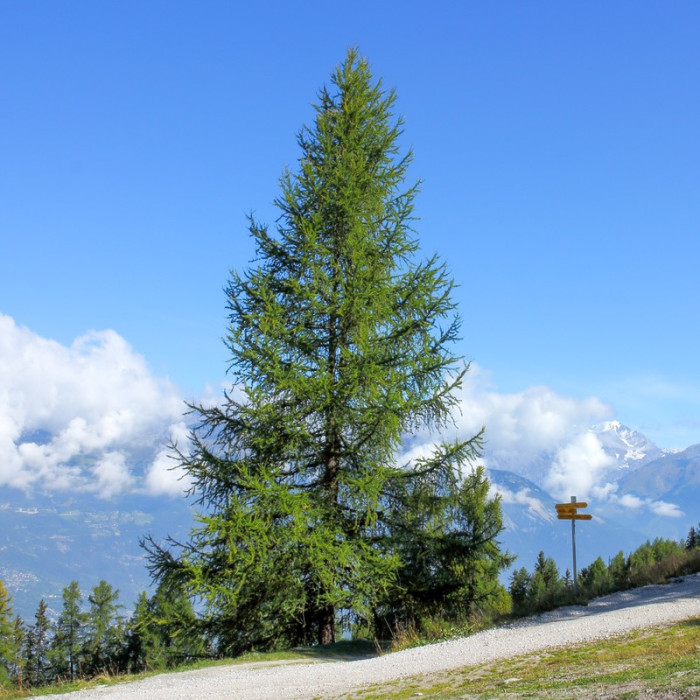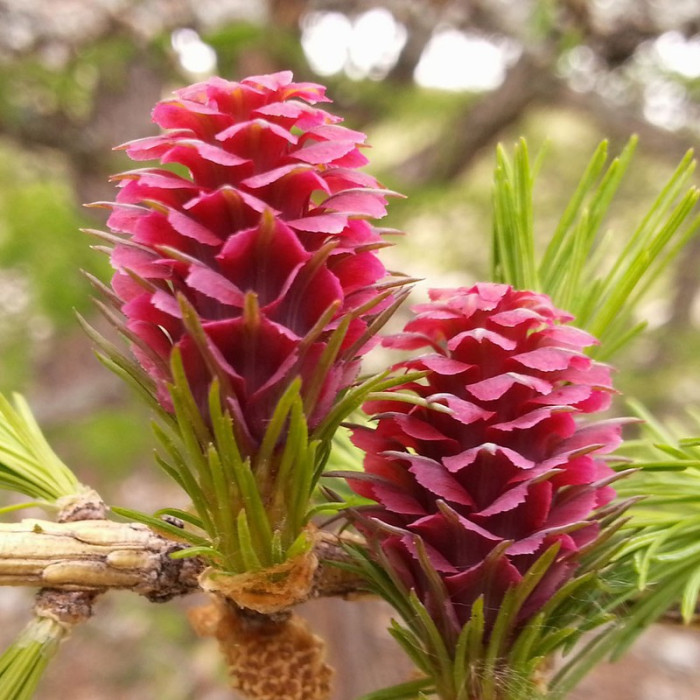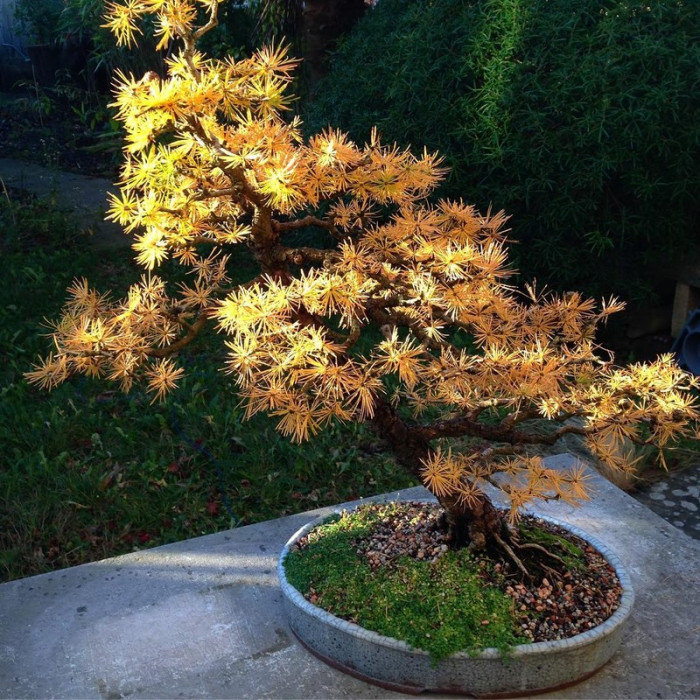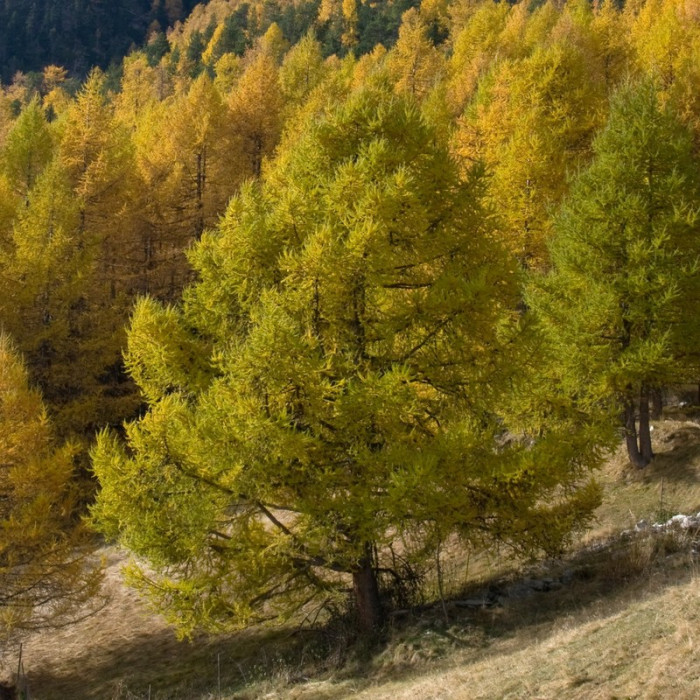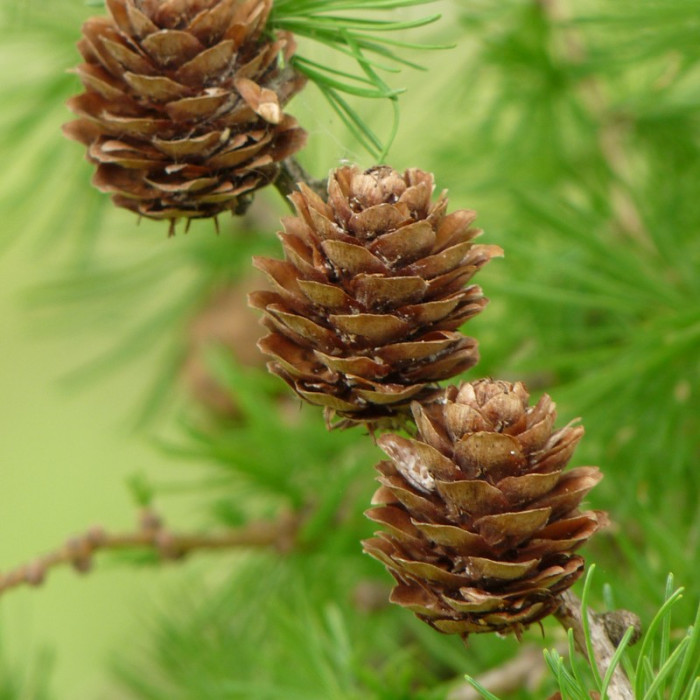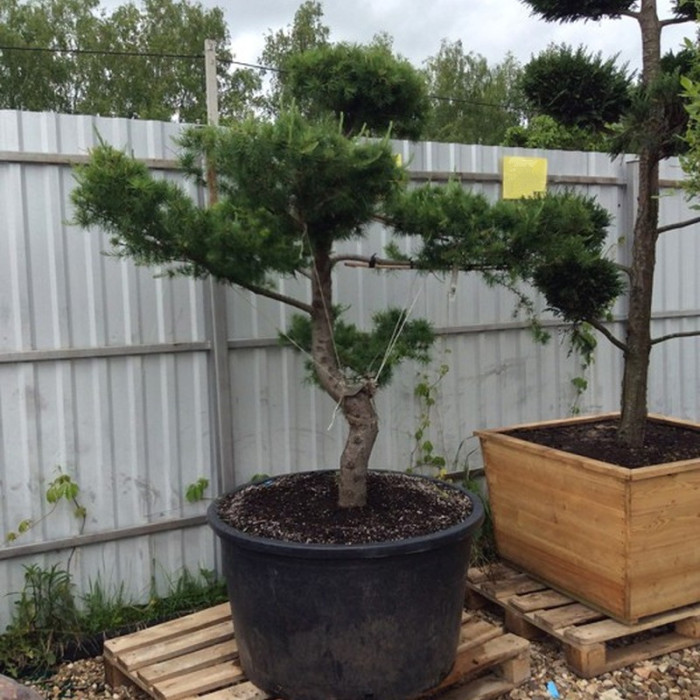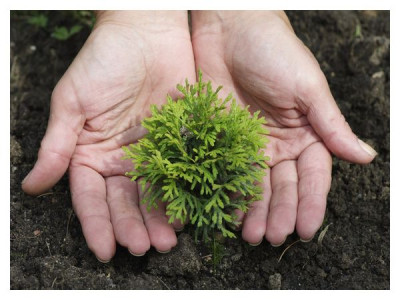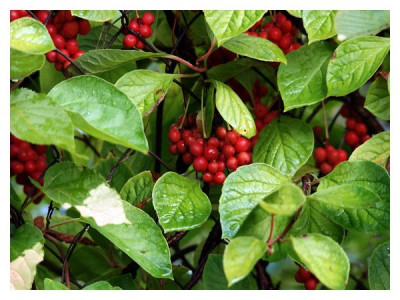European larch / Larix decidua
A tree reaching a height of 30-40 (up to 50) m with a trunk diameter of 80-100 (up to 150) cm. The crown is conical or irregular in shape, with proper pruning, shaping - can be used to create decorative, weeping forms. It is also widely used for growing in the form of bonsai.
The bark on adult trunks is longitudinally fissured, brown or gray-brown, red-brown in the inner layers, 2-4 cm thick; on young shoots grayish-yellowish, glabrous. The root system is deep, providing full wind resistance; on young thin roots often ectotrophic mycorrhiza.
The apical buds are small, spherical, the lateral buds are hemispherical, glabrous. Needles in bunches of 20-40 (up to 65) pieces, light green, often with a bluish coating, narrowly linear, soft, 10-40 mm long, 0.6-1.6 mm wide.
Male spikelets are ovate-spherical, yellow; female - ovate-cylindrical, 10-18 mm long, more often purple, less often pink, greenish-white, green or yellow. In solitary plants, they first appear in the 10-20th year, in the plantation in the 30-35th year of life. They bloom at the same time as the needles bloom.
The name can be pronounced as falling larch.

No questions about this product, be the first and ask your question.


